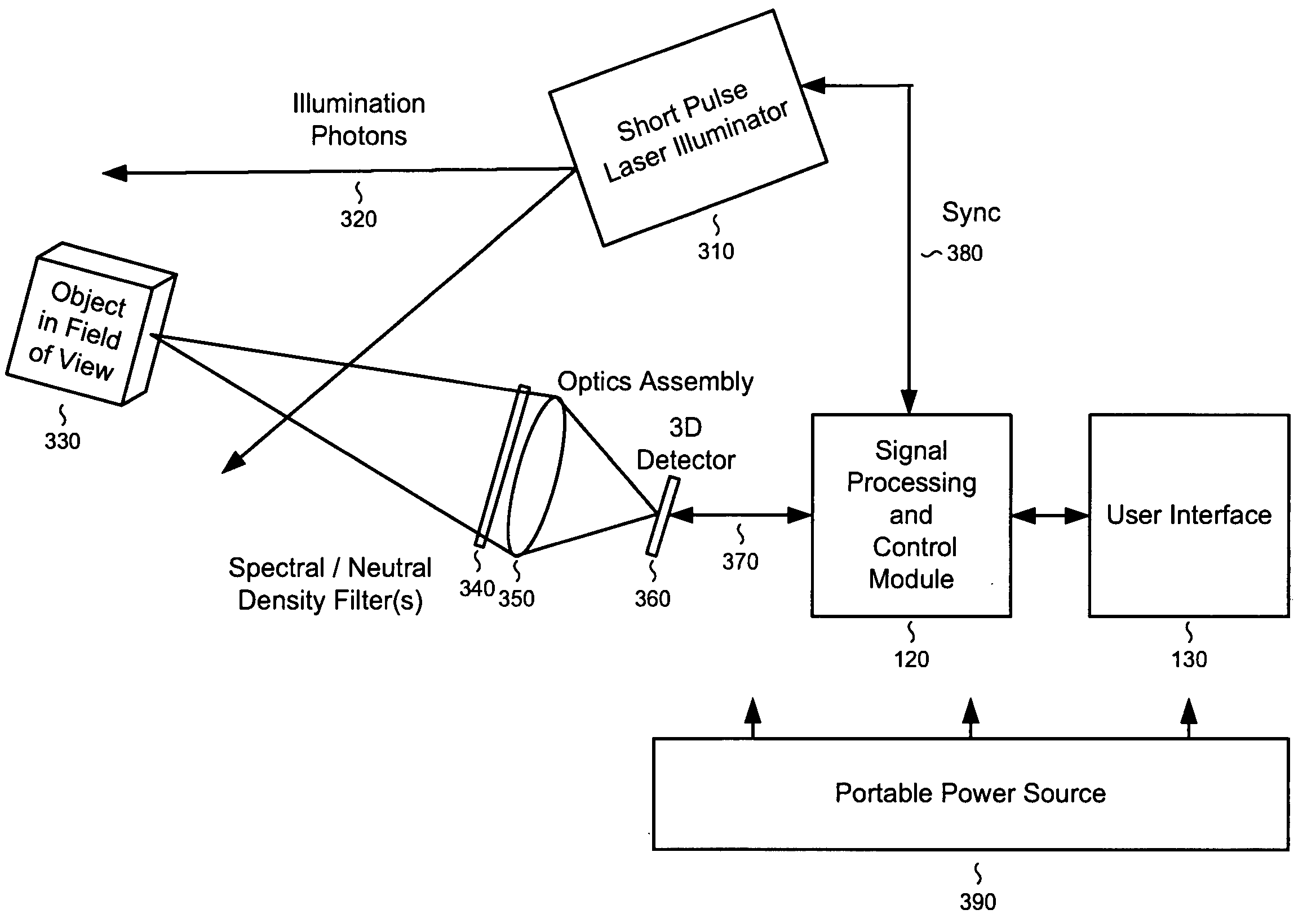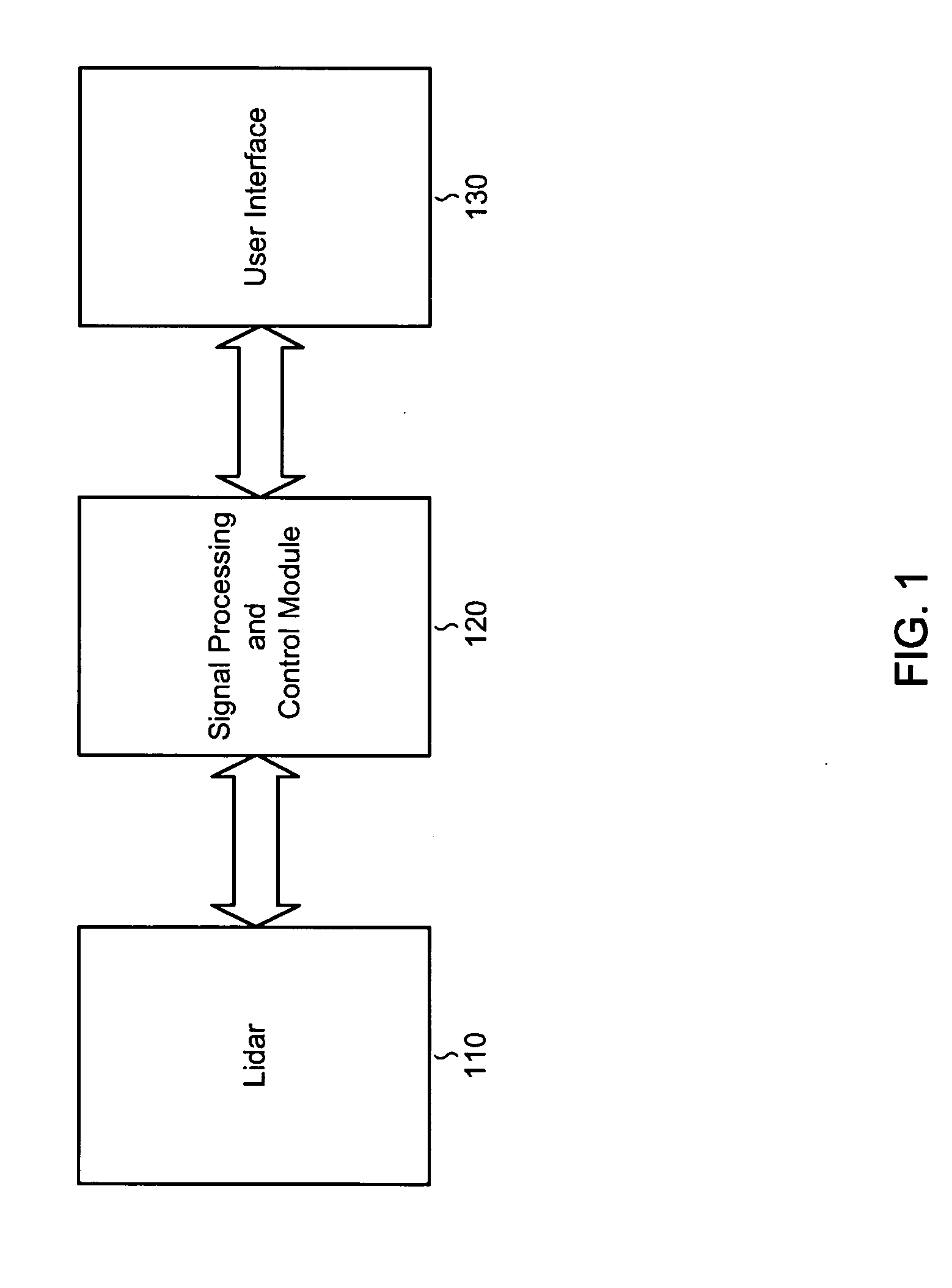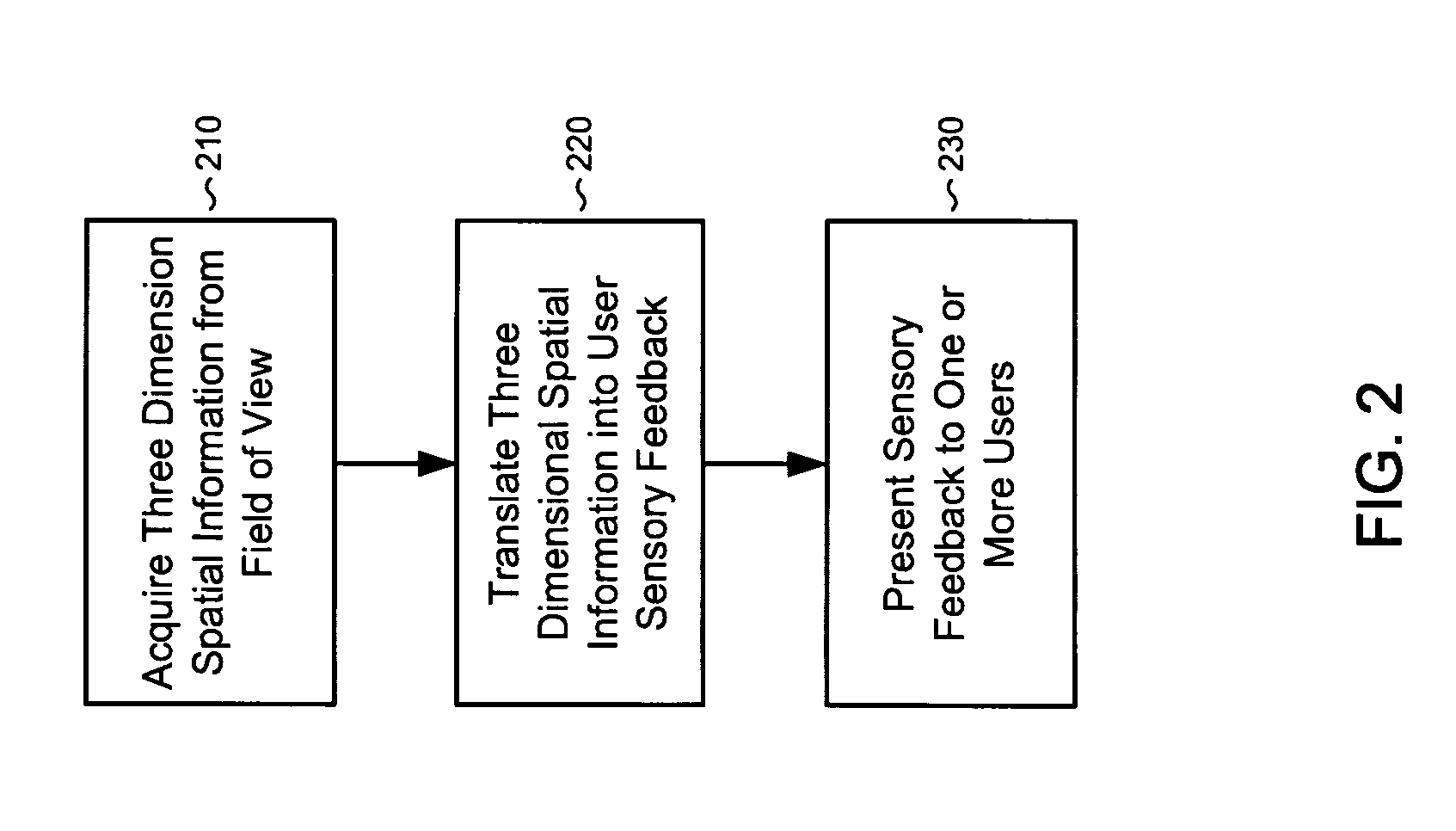Systems and methods for laser radar imaging for the blind and visually impaired
a laser radar and blind and visually impaired technology, applied in the field of vision enhancement, can solve the problems of age-related visual impairment and blindness, crude deficiency in the current art, and continue to increase, and achieve the effect of high accuracy
- Summary
- Abstract
- Description
- Claims
- Application Information
AI Technical Summary
Benefits of technology
Problems solved by technology
Method used
Image
Examples
Embodiment Construction
[0062]The present invention is directed to systems and methods for providing vision augmentation and, more particularly, to systems and methods for providing a three dimensional vision replacement and augmentation for the blind and visually impaired.
[0063]In the following description, it is to be understood that system elements having equivalent or similar functionality are designated with the same reference numerals in the figures. It is to be further understood that the present invention may be implemented utilizing a wide variety of components including, but not limited to light emitting diodes and solid state lasers, solid state imaging array detectors that operate in the ultraviolet, visible, infrared wavelengths, static and scanning optical systems, image processing and recognition hardware and software, general purpose and digital signal processors, hardware, software, and firmware for system functionality including user interface, data processing, and databases, portable pow...
PUM
 Login to View More
Login to View More Abstract
Description
Claims
Application Information
 Login to View More
Login to View More - R&D
- Intellectual Property
- Life Sciences
- Materials
- Tech Scout
- Unparalleled Data Quality
- Higher Quality Content
- 60% Fewer Hallucinations
Browse by: Latest US Patents, China's latest patents, Technical Efficacy Thesaurus, Application Domain, Technology Topic, Popular Technical Reports.
© 2025 PatSnap. All rights reserved.Legal|Privacy policy|Modern Slavery Act Transparency Statement|Sitemap|About US| Contact US: help@patsnap.com



